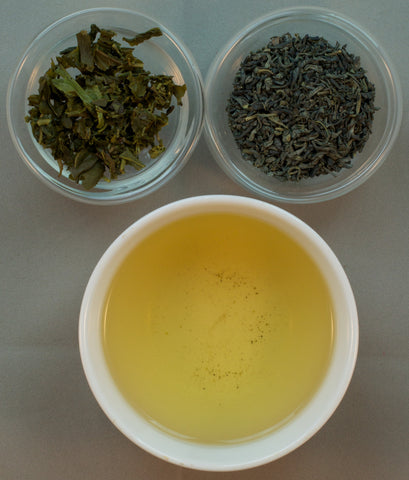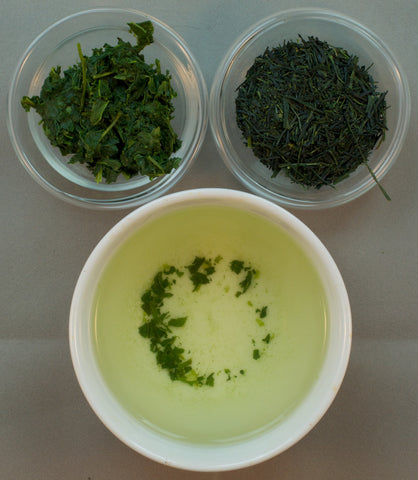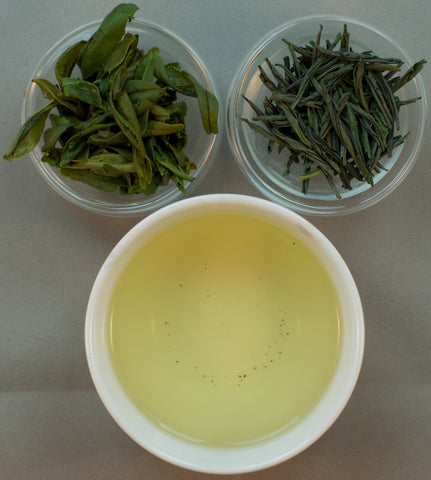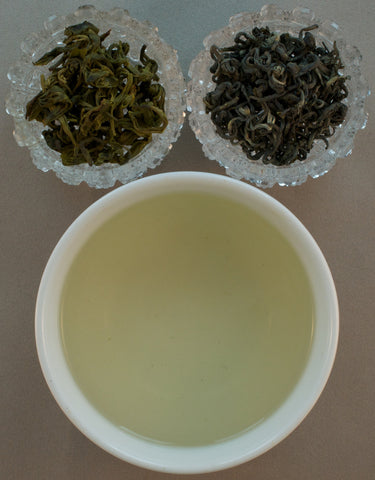Bai Cha usually means one is talking about a white tea. But in the case of the highly sought after An Ji Bai Cha, the reference is to the color of the leaves of the Bai Ye cultivar. This cultivar has only come to the attention of the larger tea drinking community since around the turn of the century but has become hugely popular both domestically and internationally. Indeed, that domestic popularity contributes to it’s scarcity and price outside of China.
The leaves of this cultivar are higher in amino acids than most other cultivars, contributing sweetness to the taste and a feeling of calmness to the drinker. The unfurled leaves of the budset after steeping reveals the characteristic fold along the length of the leaf.
The demand for this tea means that the cultivar is being planted in many other regions of China. While they may also be great, it is fantastic to be able to taste this tea from it’s original terroir.
Provenance:
-
Origin: An Ji, Hu Zhou City, Zhejiang Province, China
-
Grower/Teamaster: Song Chang Sheng
-
Harvest Date: April 2022, Yu Qian (before April 20th)
-
Cultivar: Bai Ye #1
-
Cultivation: Natural (Organic, no cert.)
-
Plucking Standard: Imperial Pluck, bud plus 2 leaf
-
History/Pedigree: This tea is a modern tea. However, Lu Yu, in his 8th century treatise, The Classic of Tea, refers to the Anji (An Chi back then?) county area of Zhejiang (Hu Chou back then) as producing the best quality tea in Zhejiang. Drinking this tea will make one tend to agree with Lu Yu.
Western-style Brewing Suggestions1:
-
Water: 170-180˚F
-
Tea: 2g per 4oz of water (about a level 1.5 TB2)
-
Steep: 2-3 minutes with up to 5 infusions
Eastern-style Brewing Suggestions3:
-
Water: 170-180˚F
-
Tea: 4-5g per 4oz of water (about a level 3 TB2)
-
Steep: Short infusions of 10 seconds, 15s, 20s, 30s, 45s, and then 1 minute until tea is steeped out. Usually 7-8 infusions
Tasting Notes:
- Mild, clean with a light floral aroma
1 Brewing suggestions are just that. Try it the suggested way then experiment. In this case I suggest first experimenting with the quantity of tea per oz of water. Then experiment with the temperature, length, and number of steepings. Some tea drinkers like to use slightly hotter and longer times for each subsequent steeping. Higher temperatures usually mean a more robust liquor but I wouldn’t stray about 185˚
2 Weighing your tea is always the best way to control your dosage. I provide approximate volume measures for convenience but they can be problematic due to the variance in tea leaf shape and size. The length of this tea definitely makes it tough. The best bet is if you have a set of oblong measuring spoons. Round measuring spoons won’t work here.
3 Eastern-style brewing, sometimes referred to as Gong Fu, entails higher dosing (higher tea to water ratio), multiple short infusions, and typically smaller volume teapots and cups. There is much room for experimentation with steeping times and dosing here, so play with the parameters to make a perfect cup of tea for yourself.



